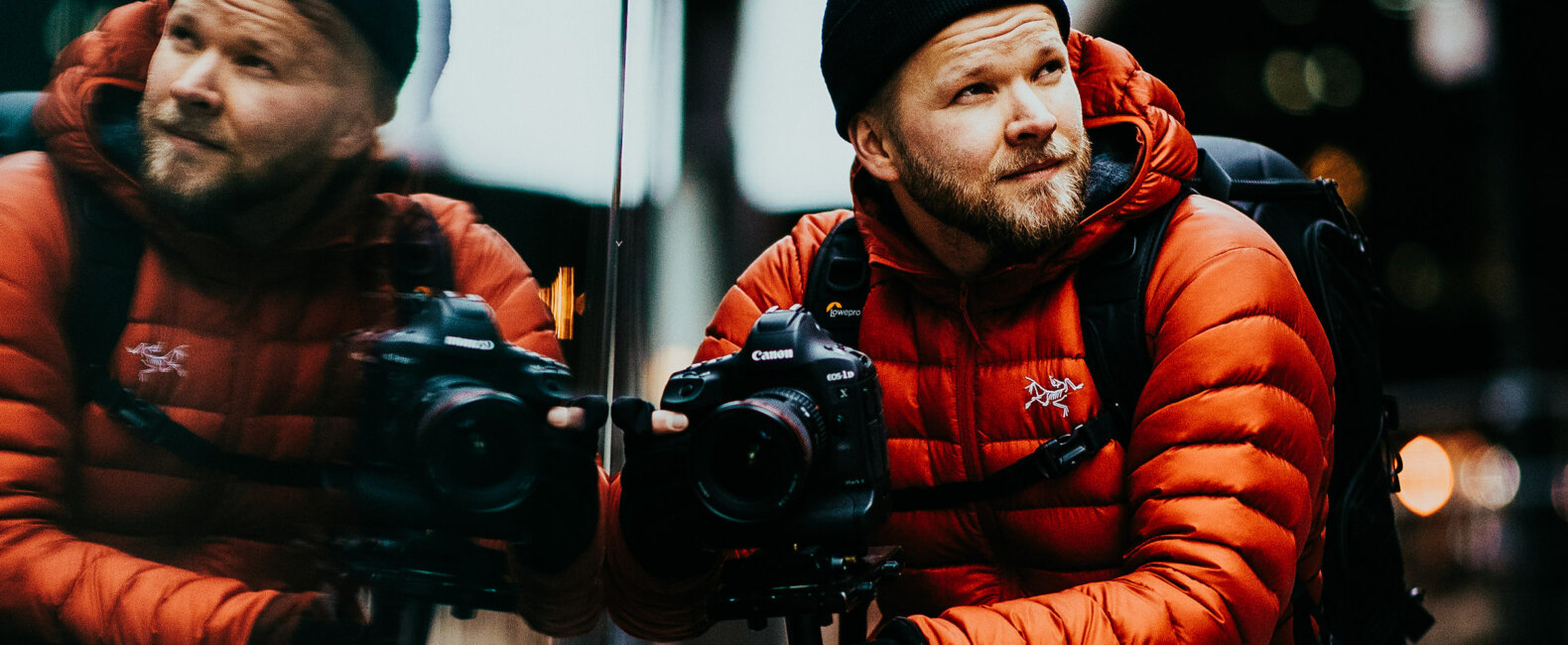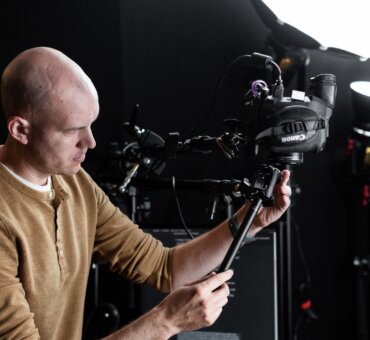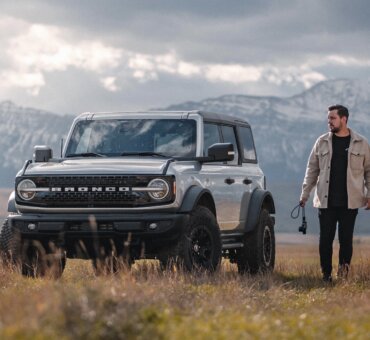There’s a lot of hesitation when you dive into something new, particularly when it comes to the direction of your career. Of course, it helps when someone’s been down that path before, which is probably why we hear this question all the time — “Can I make a living on YouTube?”
First, it’s a hard question to answer because it depends on so many variables, most of which have to do with you. Are you committed enough? Talented enough? Passionate enough?
Second, we don’t know.
Luckily for all of us, Matti Haapoja does know — and when you remove all of those moving variables, his answer is “yes.”
As a Musicbed Ambassador, we’ve had the privilege to get to know Matti quite well, both as a former DP and a current YouTube creator. His channel is skyrocketing in popularity, and for good reason. Not only is he an extremely talented filmmaker, but he’s also relatable and honest, which is exactly why you should trust his answer when he gives it to you.
He shared his thoughts on how to make a living on YouTube, how he structures his videos, and the freedom he’s found on the platform. So, if you’re a filmmaker on the fence about YouTube, allow our good friend Matti to push you in the right direction.
Musicbed: What initially drew you to YouTube?

Matti Haapoja: I realized that the more successful I got as a DP, at least in my experience, the less creative input I had. So, I was just essentially being hired to shoot.
I felt like I was building somebody else’s dreams all the time, building somebody else’s brand and not doing the things that I actually wanted to do, which were making my own content, film docs, and things like that. The further along I got, the more I realized I didn’t enjoy making the bigger commercials as much as I thought I would.
Then, I realized there was this interesting world of YouTube. I ended up going to this YouTube festival called Buffer Festival when one of my travel videos got picked up. I thought, Oh, this is actually a career choice. People are actually making money on YouTube, making their own content.
Was there hesitation at first?
I knew that if I stepped into the YouTube world it would be a downgrade in a lot of people’s eyes and maybe be a downgrade in my own eyes because I always want to make better and higher quality films. I also feared I might lose the respect of some people in the film industry or commercial industry.
But then I eventually said, “Screw it. I’m just going to try this out and see what it’s like.” At the beginning of 2017, I decided I would make at least two videos a week.
It didn’t take off right away, but I posted and maybe two or three weeks later I started getting like 20 subscribers, 50 subscribers, 100, then it was 300. Soon enough I was getting like 500 subscribers a day. Within six months, I was able to make a living on YouTube full-time.
When was the point you thought you could make a living on YouTube?
As for a specific number, that’s the hard part. In the beginning, when you start a YouTube channel, you’re not going to be making any money. You really have to have a passion for filmmaking. For me, I made some courses and had some stock footage and presets. That really quickly got me to a point where I was making the same amount of money from YouTube as I did freelancing.
I think it requires an audience, but it doesn’t require as large of an audience as you may think to make a decent amount of money. Already from 30,000 to 50,000 subscribers, I was covering the bills.
I think people are really worried about how to make money outside of the traditional space. My strategy for that is to maximize revenue streams, selling presets or having courses. There are just so many ways you can make money from an audience. It ends up being really consistent compared to something like freelancing.
Listen to the Musicbed playlist Matti created:
So by now, those fears about downgrading seem to be unwarranted…
I’m sure there are still a lot of DPs and directors that think, He couldn’t cut it in the filmmaking world. He couldn’t cut it in the commercial industry. If they knew the opportunities and freedom I have through YouTube, they would probably think differently.
It’s definitely not a downgrade. It’s just a change in filmmaking. Instead of trying to make the highest quality image and trying to make things as beautiful as I can, I’m a lot more focused on the story. In order to tell the story, I may need to shoot it on a smaller camera, just run around and not worry so much about what it’s going to look like. That’s been one of the biggest things for me. I’ve learned to tell a story in a better way.
How so?
For me, storytelling was always kind of vague. You need to have a conflict, a good guy and a bad guy. It was just the most basic understanding of what a story was. Through YouTube, I realized storytelling is more of getting a point across and there’s a whole bunch of ways to do that. I always want to have some sort of point to my films and that’s something I’ve been able to learn through YouTube.

Do you apply a structure to all of your films, even tutorials and things like that?
Yeah. I’ve broken down my storytelling structure into a basic three-act structure. Essentially, I just have an intro where I try to hook the viewer with the top, or even something unrelated to the topic that’s just fun.
After that, I get into the beef of the video. What is this video actually about? What am I trying to get across? Then I do an outro. Something that summarizes the whole video and puts you in a good mood after watching it. It’s super basic, but I think of it more as if I would just be delivering a talk. How would I get my point across?
On YouTube, you have to either entertain or provide value. In my mind, I want to do both in every single video, but I’m not crazy. I’m not Logan Paul or someone who’s purely relying on their entertainment value. I rely a lot on providing value.
Do you think it’s easier or harder to be a YouTube creator now?
I wouldn’t say it’s easier or harder. I would say life is very different. I work way more, way harder now because there’s an infinite amount of work. There’s never a time where you can truly say that you’ve done your work. It’s all about your income and if you want to make a living on YouTube, it’s dictated by the amount of work you put into it.
So, I do work a ton more, but it’s way more fun. The things I’ve gotten to experience. Traveling around the world, diving with sharks, all these things. I would’ve never gotten to experience them otherwise. Or if I did, it would’ve been me filming someone else experiencing them.
Would you have the success you’re experiencing on YouTube without the DP experience?
The reason I think I’ve been really successful is that I have all that experience. I started out shooting weddings and that taught me a whole bunch of things. Then I did some videos for my old church. Then I stepped into the commercial industry. I had maybe eight or nine years of experience before even starting YouTube.
Without all that experience, there’s no way I would’ve been able to make a living on YouTube or provide that value and teach people. My biggest advantage on YouTube is that I don’t have to think about the production side of things. It comes so naturally for me to make videos, make films. I can just focus on the story and the things I want to get across.
Do you think there’s a place for the beautifully crafted, cinematic image on YouTube?

You do have to let go of certain things, at least for a time. Probably the main thing is quality. If you’re going to shoot your videos on an Alexa Mini, you’re probably going to struggle so hard.
One of the things I struggled with when I started YouTube was that I didn’t want to fall away from telling these stories in a really high-quality way. I didn’t want to lose that, and I took on a lot of pressure from it. One of my dreams is to shoot more documentaries and full-length feature docs.
Then I understood that I’m probably going to be working for the next 30 years. I have a lot of time, so I don’t have to do everything at once. I put my career into phases now. This is my YouTube phase, where I really create my own brand. Then I can use that — the connections I’ve made, the thing’s I’ve learned — to make features once the time is right.
So, I took that pressure off myself. The time will come. I’m already starting to work on some feature ideas; it’s starting to happen. I’ve just got to let things go and let them happen in their own time.
Think you’re ready to take the plunge yet and make a living on YouTube? One of the easiest ways to get started is with a Personal Subscription to Musicbed.
For one low, monthly price, you can get unlimited music from a catalog featuring more than 15,000 songs — not to mention dozens of playlists curated specifically for filmmakers.




















































































